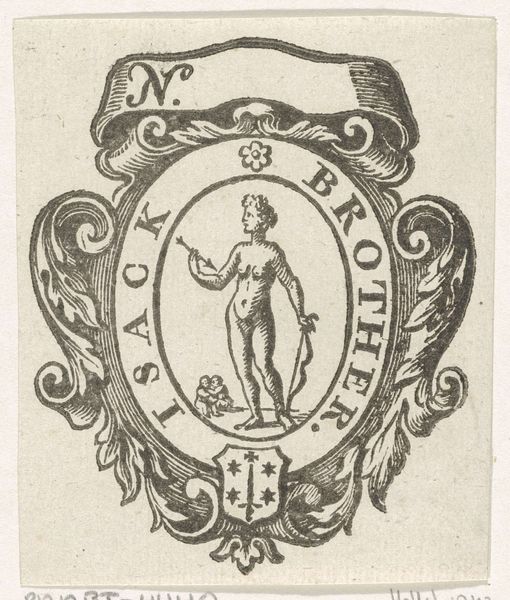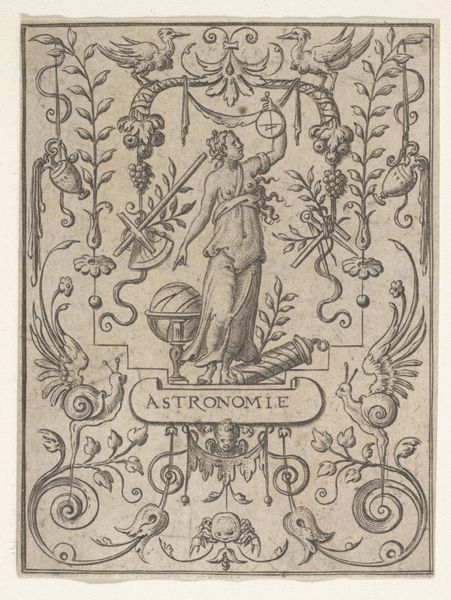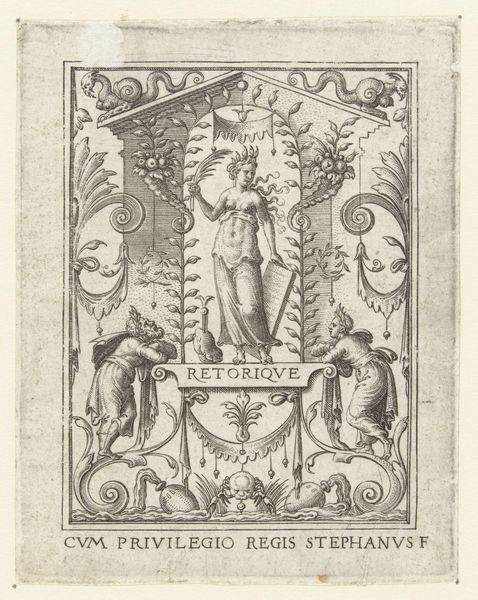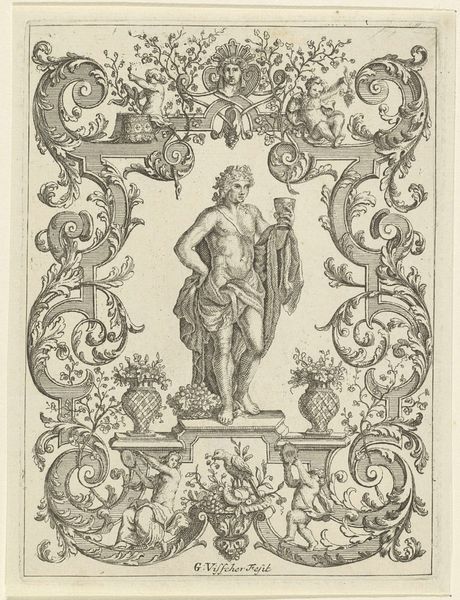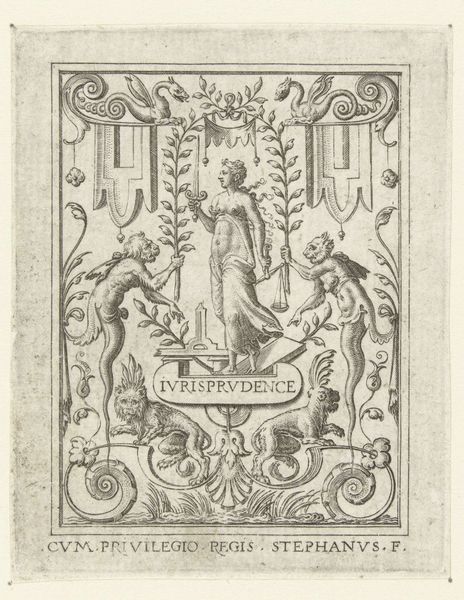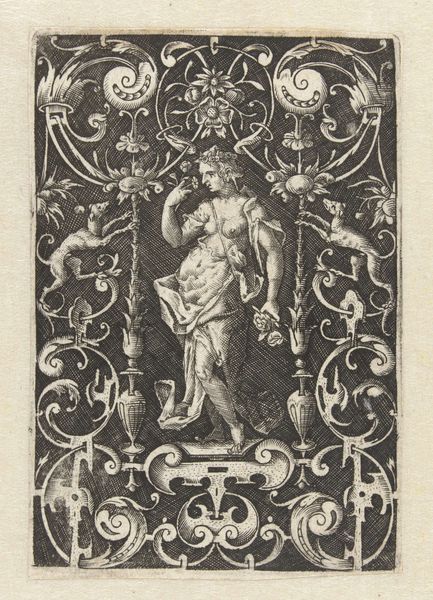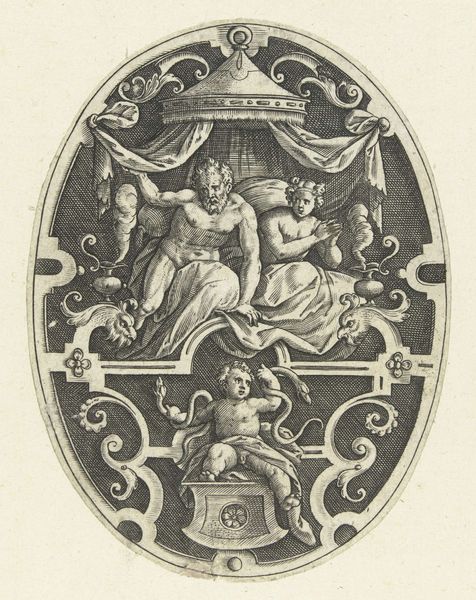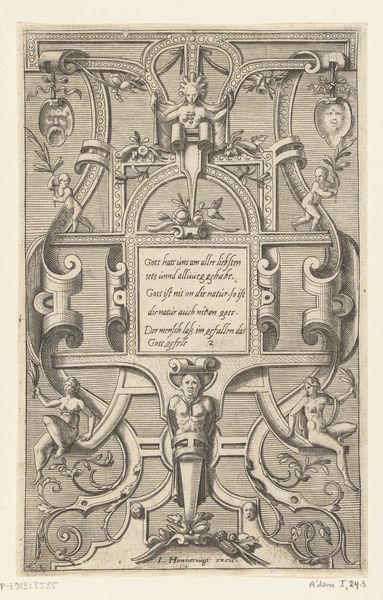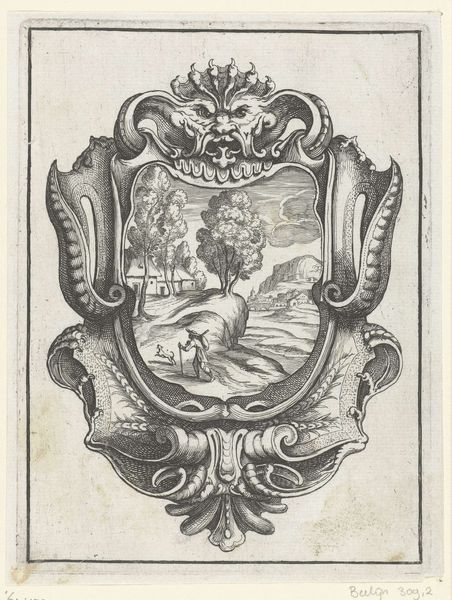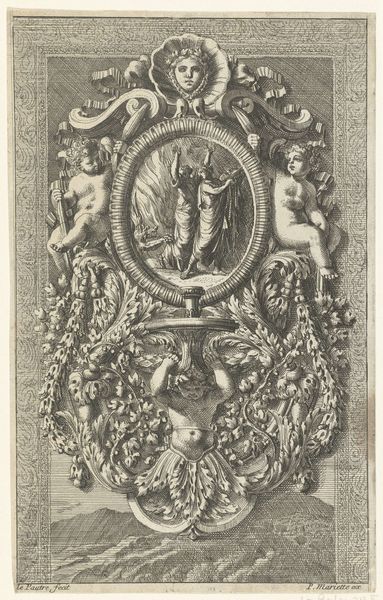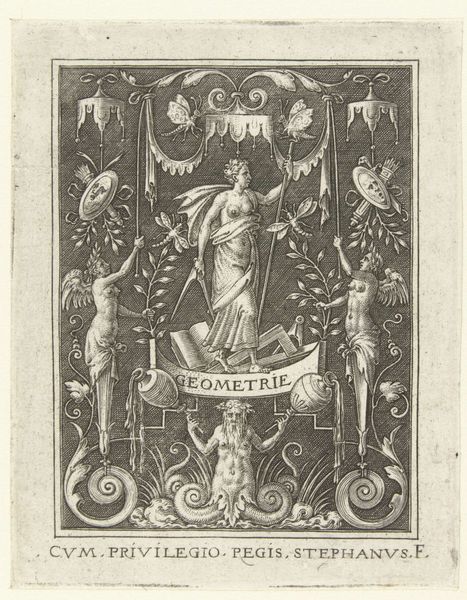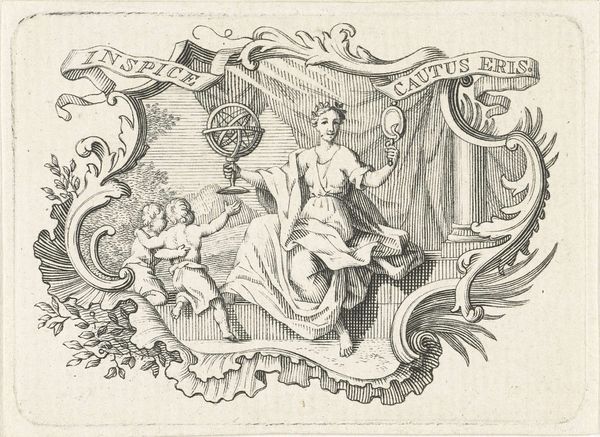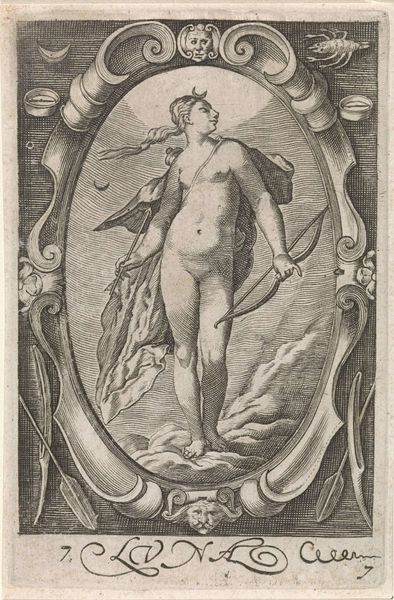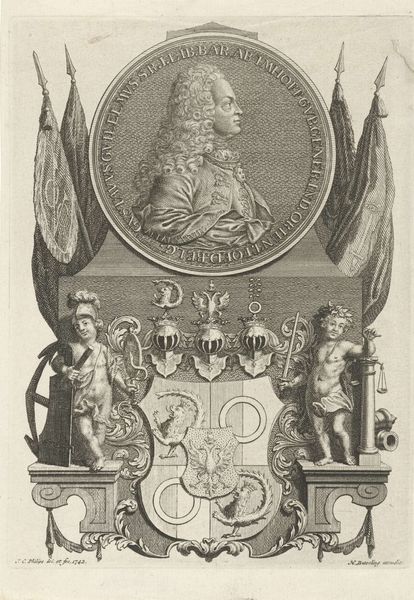
Titelvignet voor: O. Panvinius, Beschryvinghe ende heerelijcke afbeeldinghe der twaelf Sibyllen 1608
0:00
0:00
print, engraving
#
allegory
#
baroque
#
pen drawing
# print
#
pen illustration
#
old engraving style
#
figuration
#
line
#
engraving
#
miniature
Dimensions: height 92 mm, width 73 mm
Copyright: Rijks Museum: Open Domain
Curator: This is an engraving from 1608 by Zacharias Dolendo, currently held at the Rijksmuseum. It is entitled "Titelvignet voor: O. Panvinius, Beschryvinghe ende heerlijcke afbeeldinghe der twaelf Sibyllen" a title vignette for a book describing the twelve Sibyls. Editor: My first impression is one of intricate detail and symbolic weight. The sheer amount of information packed into such a small space is striking. The image radiates a kind of serious, intellectual mood typical of baroque printmaking. Curator: Exactly. We must consider how this print reflects the patriarchal structures of the 17th century. The central figure of Justice, blindfolded and holding her scales, represents an ideal, yes, but within a system that often perpetuated inequality for women and marginalized groups. Editor: Right, the execution itself speaks volumes. Engraving, as a medium, necessitates meticulous labor, repeated action, physical toil and skill with tools. The act of creating this fine print speaks to a whole system of production and making art. The artist is materially investing his time and skill. Curator: I agree. Look closer at how the figure stands on a pedestal emblazoned with the word “virtus” and holds a sword. Consider how the placement within the book on the Sibyls and their stories intersect. Who could embody such virtue? Which historical voices or groups have been silenced? Editor: You're spot on. The image is not only symbolic but constructed in the here and now with its materials and execution; line by careful line, impression by impression, each print object becoming the end-product of many hours work. These images of idealized power were then circulated and bought by a consuming market. Curator: What really stands out for me is how Dolendo has woven together classical allegories with contemporary anxieties. The scales of justice feel almost like a commentary on the era’s turbulent politics, a plea for balance and order in a rapidly changing world. The figures and the words are allegorical representations, yes, but it is only one person’s idea of the Sibyl’s descriptions being put in context. Editor: Thinking about that circulation and how these were used interests me as a way of examining the cultural capital embedded within printed images, and how that impacts material reality through acts of social distribution. How accessible was this print? Was it exclusive, or made for broad use and did that impact how the figures came to embody the word *Virtus* you’re so keen on! Curator: Thinking about that access and reflecting on these symbols now, in our current political and cultural moment… Well, it makes one wonder what Justice truly means and who truly has access to it, now, over 400 years after Dolendo put his vision down for distribution in the physical world. Editor: Indeed. Understanding these production methods gives insight into the economic conditions around artistic creation in 17th century Europe. Each carefully placed line echoes the socio-political contexts, allowing a deeper engagement with it as both aesthetic object and material record.
Comments
No comments
Be the first to comment and join the conversation on the ultimate creative platform.
